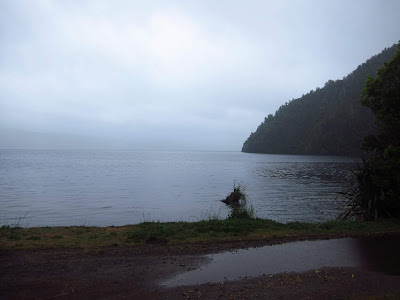Kuirau and the Taniwha

The gods were so angry they made the water boil. At Kuirau Park in Rotorua can be found a remarkable assortment of steaming thermal activity, including a large extremely hot pool amidst tea-tree and swirls of steam - Kuirau Pool - named after a Maori woman who had a most unfortunate experience with a taniwha (water-monster). Long before the coming of the white man the pool was known as Tawakahu. At that time its temperature was perfect for bathing, and successive chiefs reserved the water for the use of themselves and their families. Possession of the pool eventually passed to Tamahika who reserved the waters for the private use his very beautiful young wife Kuirau. Kuirau swam naked in the comforting waters every morning and evening, unseen by human eyes. However she was constantly watched from the deep bottom of the pool by a vicious taniwha. This evil monster was afraid of man only em...





